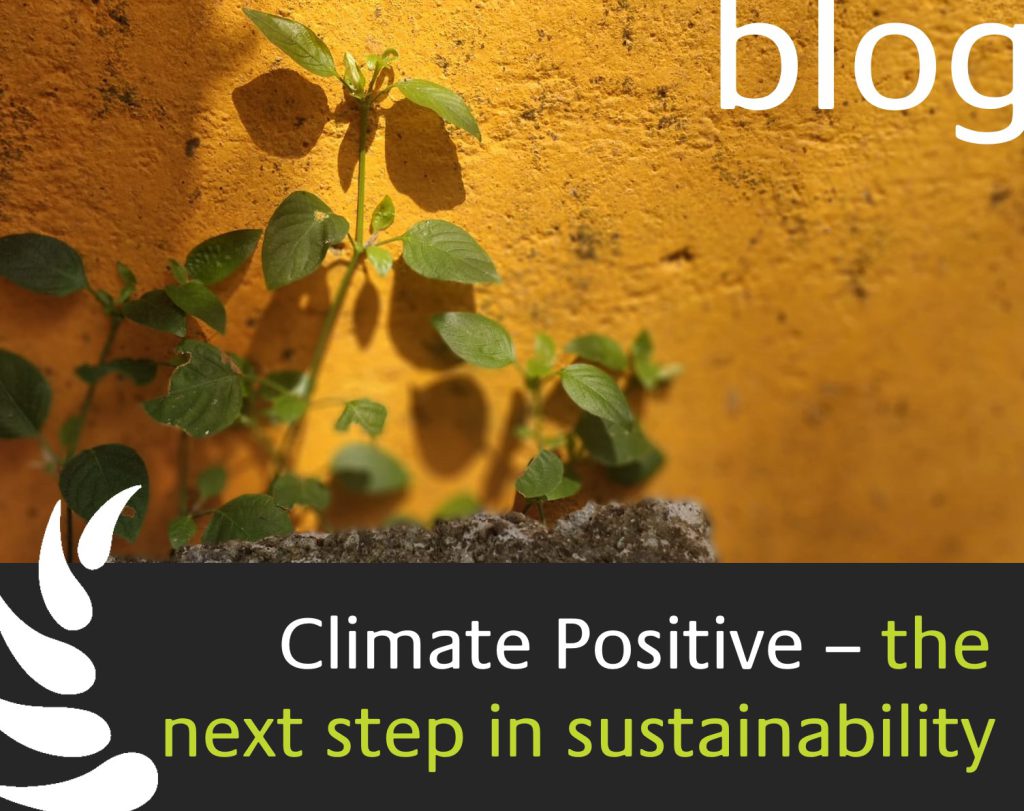Everyone, everywhere and every day is affected by their direct surrounding. Over the years it has become visible that something has been and is happening with our climate. Climate change is a hot topic that has gotten a prominent place in the daily news. Now here is a blog in which David Marshall, Chief Executive of Immago, clearly explains the difference between climate positive and carbon neutral, as well as the roles that the Fashion industry and regenerative Agriculture play in all this. – paul kronenberg
Climate Positive – the next step in sustainability
By David Marshall
“At this month’s COP26 summit in Glasgow, the overall goal was to chart a path to keep global warming limited to 1.5C and avoid the worst impacts of Climate Change.
After much bickering over words and phrases, mostly by two of the world’s biggest polluters, India and China, a deal was finally reached.
Unfortunately, the deal doesn’t seem to go far enough for some, with Greenpeace saying it keeps the 1.5C goal “only just alive”.
One thing that is obvious after the summit, is that Climate Change is now mainstream news.
From local businesses to international brands, the word is sustainability, but many are now saying we’ve passed the point where sustainability is not enough.
Climate Positive is the new buzzword in the fight to save the planet.
What is Climate Positive?
Climate positive is the act of having a positive impact on the environment, rather than simply trying to lessen your negative impact.
Those dedicated to carbon positive practices aim to remove carbon dioxide from the atmosphere, thus having a positive effect on climate change.
Going carbon positive means going a step further than carbon neutral or normal sustainable practices.
The difference between climate positive and carbon neutral
Carbon Neutral means that the amount of carbon your process puts into the atmosphere is offset by things that remove carbon, such as trees, soils, and oceans.
According to Onetreeplanted.org, the average American emits around 16.2 metric tons of carbon dioxide every year. To offset this, they should plant around 8-10 trees.
When it comes to businesses, that number is of course dramatically increased.
Although it’s hard to pinpoint, it’s estimated that SMEs have a carbon footprint of 539 tons each per year.
Corporations boast about planting trees to offset their carbon, but this isn’t necessarily a good thing.
Their original carbon is still going into the atmosphere. The tree they planted will take years to grow and remove that CO2, meanwhile, the carbon they put in is contributing to climate change.
Being climate positive means that you are actively removing carbon through your production/manufacturing process.
Climate Positive in the fashion industry
Fashion and sustainability have not always gone hand in hand, and we’ve talked before about the damage the apparel industry does to the planet.
But the industry is starting to change its ways, albeit slowly.
Pre-COVID-19, designers including Gabriela Hearst, Gucci, and Dior were staging carbon-neutral shows and repurposing their sets, while brands high and low were promoting organic, recycled, and upcycled garments.
The pandemic has only highlighted the need for more sustainability in the industry, with a survey by Vogue finding that the desire to buy sustainable products in the industry is steadily increasing.
That’s all great, but the reality of it is the fashion industry is nowhere near close to sustainable, let alone climate positive.
Overconsumption is now the biggest factor in climate change, and research has shown that we actually buy more when products are labelled with words like recycled or sustainable.
Regenerative Agriculture
One big positive change in the industry comes in the form of regenerative agriculture.
Growing cotton to make clothes takes up a large part of the industry, so if there was a way to make this climate positive, that would go a long way towards a regenerative future.
Healing the soil through regenerative farming means great soil health, which in turn means capturing more carbon.
Some big names like Patagonia are using regenerative farming practices to not only reduce their carbon footprint but actively reduce the carbon in the atmosphere, thus making them climate positive.
This blog post was originally posted on November 21, 2021 In News By David Marshall
https://immago.com/climate-positive/
If you are planning to start an organisation that will address an environmental cause, then the kanthari scholarship-based leadership training course can equip you with the skills and topols that you’d need: apply today at https://www.kanthari.org/admissions/
Or if you want to learn more about kanthari, then join a Get to Know kanthari session: sign up on https://rb.gy/mnwlkm



